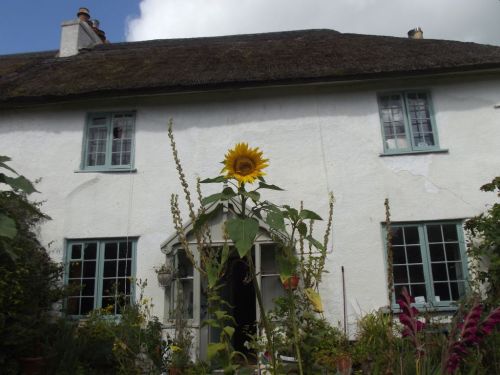The Inspiration of Edward Bach
Simon France
One summer in the mountains of Wales, over seventy years ago, an inspired man by the name of Edward Bach, placed the freshly picked blooms of three flowers, clematis, impatiens and mimulus, in glass bowls of water. He left them in direct sunlight for three hours and then bottled the water with equal amounts of brandy. He came up with this ingenious method of capturing the spiritual qualities that emanate from the flowers after being frustrated by initial attempts to collect enough morning dew from the petals. At this point Bach had no idea that these tinctures, he later called flower remedies, would form part of a repertory of 38 that are known as The Bach Flower Remedies and respected all over the world. From these humble origins flower remedies, or essences, are now made from thousands of different plants in all continents. It is truly a global movement with essences available from the simple daisy all the way to the cosmic lotus.
The British Isles, however, remains at the heart of the flower essence movement with approximately 80 different producers. With a few exceptions all are micro business, individuals or small family firms that find the same level of inspiration and dedication that Dr. Bach experienced. Again, with one or two exceptions, the main motivating force behind their work is not financial – you have to be exceptionally gifted and lucky to make the average wage – but the desire to pass the healing that issues from the flowers onto humanity. Many more make their own collections of remedies for personal use and the treatment of family, friends and clients.
The inner philosophy and outer actions of Bach underpin the flower essence movement. He was a successful London doctor who gave up a lucrative practice to roam the hillsides and county lanes in search of a new form of healing. When he found this incredibly simple yet effective form of natural medicine, he looked not to exploit it for financial gain but to share his discoveries with anyone who would listen. The flowers that grow on the Earth are abundant and freely available. The recipe for making them into healing herbs is so simple a child can do it. Because they contain only the spiritual quality of the plant, this is also referred to as the plant’s vibrational impulse, they can do no harm, only good. Their healing action is primarily upon our negative emotional and mental states, such as fear, anxiety, anger and doubt, although they can also be used to physical conditions.
Many have told me that their initiation into the subtle power of the remedies occurred after using Bach’s Rescue Remedy, the first documented flower essence combination. To make this he mixed five separate flower remedies together. He himself recounts an incident with a fisherman, on the east coast of England, who had been hauled out of the sea and was in a highly traumatised state due to hypothermia. Rescue Remedy was applied to the man’s lips and a remarkable recovery quickly occurred.
I have been in the business of making, documenting, selling and teaching about the remedies for many years. During this time I have seen some miraculous healings from the remedies I have prescribed. Just recently, a neighbour to whom I had given some remedies for a relation suffering from chronic asthma, requested more as she has now come off the steroids she had been using for many years and is feeling so much better. This is a typical story. In so many different ways people are profoundly touched by the remedies, and not only through their curative properties, as flower remedies are an educational medicine, that is to say we learn about ourselves when we use the essences.
After studying the Bach system I went on to explore the flower essences of the warmer climes such as banana, lotus, orange etc. Growing in confidence, I went on to make my own from the woods, meadows and hedgerows in northern England and on and on…So many different flowers, each with a therapeutic quality. I am one of a smallish band of individuals who have been inspired by the work of Dr. Edward Bach. He died at the early age of 50, having only just completed the discovery and documentation of his set of remedies. Who knows how many more remedies he would have gone on to discover if he had more time on the earth.







